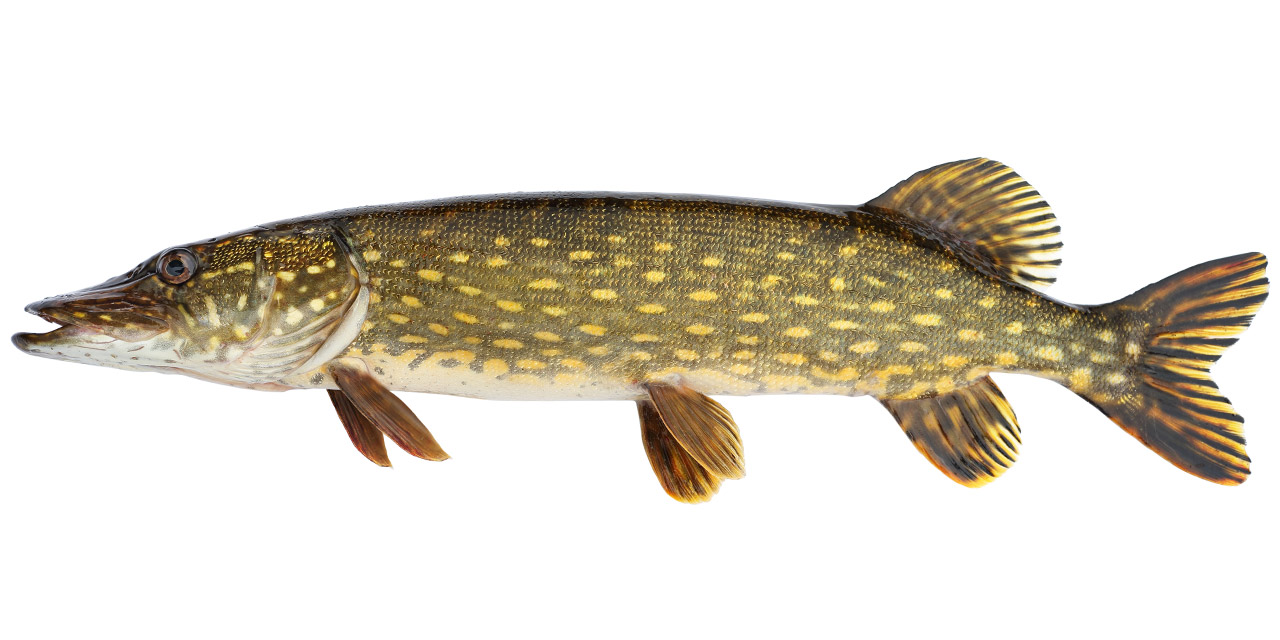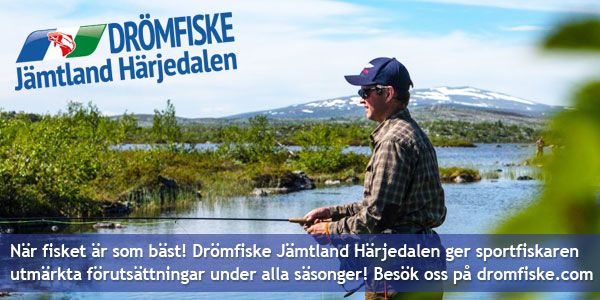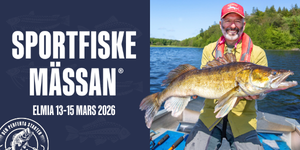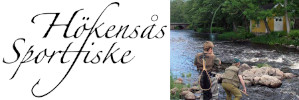Användarmeny
Pike ( "Gädda") Overview
"Gädda") Overview

Pike - Esox Lucius
The pike is a pronounced predator, and its only natural enemy is usually other major pike. A pike can put in a fish that is up to half its own size. In general, the pike eats the most smaller fish, but if occasion is given, it also eats other animals, for example. Small birds, water worms or reptiles. The pike always swallows the swap with the head first, turning the fish into a place to get it right. When the puppet has begun to swallow her byte, the backward teeth on the jaws, in the palate and on the tongue make it impossible for it to spit the change again. It may lead to an excessive change, perhaps a seabird, stuck in the throat's throat, so that both hunters and swords die. The boy is playing early in the spring after the ice-cold and likes flooding fields and meadows where he places his space The sun-warmed water. In this way, the rum develops faster, and the newly hatched larvae get sheltered in an environment with a lot of small bytes.
Gäddans bajs is avoided by other fishes, as the bajs contains alarm hormones. Other fishes know that it is a "danger". On a questionnaire to all Sweden's fishery area associations about which one considered to be the most important fish in their waters, the "water" pike! The pike's scientific name is Esox lucius. Esox has a little unclear origin, but it indicates long-term fish through the Greek. Lucius is considered to come from "brilliant" when it was thought that the very white fine flesh lit at night. The Swedish name comes from the prehistoric word for bark or nail. The closest relative is the muscule, a North American pike. Gäddan is Östergötland's landscape fish. The fish is an excellent and highly appreciated food fish, where parts of Swedish fishery catches are exported mainly to France. There is no threat to the pike, why it is not included on any "red list". However, within the sport fishing, "no kill" is often used to save large fish, partly because they can reproduce, partly because other anglers will also get the chance. The pike is durable and robust and will work well if you drop it back quickly.
Population
The pike is the premier predator in Sweden and a very popular species for anglers. It is found throughout Sweden, with the exception of certain parts of the mountain world. In recent years, pike has been found in mountain water where it was previously missing, personally, I have (Thomas), for example, Caught pike in Langas, where, according to the Sami, unfortunately, it wandered just a few years ago. The pike likes both lakes and calm streams and rivers. Lekvandring occurs. The barge is also located along the Baltic Sea coast in broken water around to the Sound. It is also circular in the Northern Hemisphere. In recent years the pike has fallen sharply along the Baltic coasts in several directions. In the archipelago of Stockholm, it may at least partly depend on fishing pressure. Therefore, conservation zones have been set up here. Other areas, such as Kalmarsund, are unclear why the pike fell, but research is ongoing. One theory is that when the cod has fallen sharply, the big spikes have grown a lot, and that the spike then eats ginger larvae, and competes for the pike's foie gras. Others say that it is an effect of the spread of the intersection. One can say that the pike is for the angler, what a Volvo is for the car enthusiast. If you like cars, you'd rather have a Ferrari, but you might have to settle for a Volvo, which is actually very good. Fishing anglers often want to catch a big salmon, but they usually have to settle for a big and combatable pike, which also gives a nice experience! Despite the rich availability of byte fish, the pike can decrease in numbers in large turbid waters. This may be due to the fact that this environment is ideal for the goose, which competes with the pike, partly because it may be because when the pike chases with sight, the hunt becomes more difficult in turbid water. There may also be a reverse predation effect, so that whitefish seek shelter for predator in dense vegetation and shallow water, and may also eat a lot of dung here. For standardized net fish, usually only single pigs are caught. This is because the pike does not move so much, but often has a stand where it is waiting for shelter and cheating on byte fish.
Size and growth
The pike grows throughout life, and the females are usually larger than males, which stops at about 7kg and 120 cm. Hongäddan can reach a weight of over twenty kilos and be almost 1.5 meters long. During normal good conditions pike grow quickly, and the female becomes sexually mature after about 3 years when it can be 35 cm.
Record size
The prevailing Swedish sport fishing license is about 21.07 kg, but the pike can reach weighing over 20 kg under favorable conditions.
Fishing tips
The pike lives alone and defend their födorevir it anywhere maintains close plant stocks where there is plenty of work. In between doing the hunting treks, and pausing occasionally for example, a reef. Vary your fishing and look for pike. The really big pike is usually between 5 and 10 meters deep, but normal pike can sometimes go very shallow. Fishing therefore both in the surface, near the beach and around shoals, reeds and deep edges. If the wind has remained in one direction for several days, it happens that pike gather on the side where the wind blows and waiting for prey with his head "against" the wind. The pike can be fished on everything from fly for angling with bait fish. If you spin fishing with a lure, vary your fishing and do one or two spin state. An increasingly popular method of fishing for pike in recent years is the so-called Jerkbait. This is a special type of fish like features as pressure until near the surface. Classic bait for pike is otherwise spoons (eg ABU's atomic) and Wobblers (eg Zalt or HiLo). Also angling with dead and live fish is very effective.
Most efficient fishing methods
Information below is based upon thousands of real catch reports from the past two years.Winter
| Spring
| Summer
| Autumn
|




